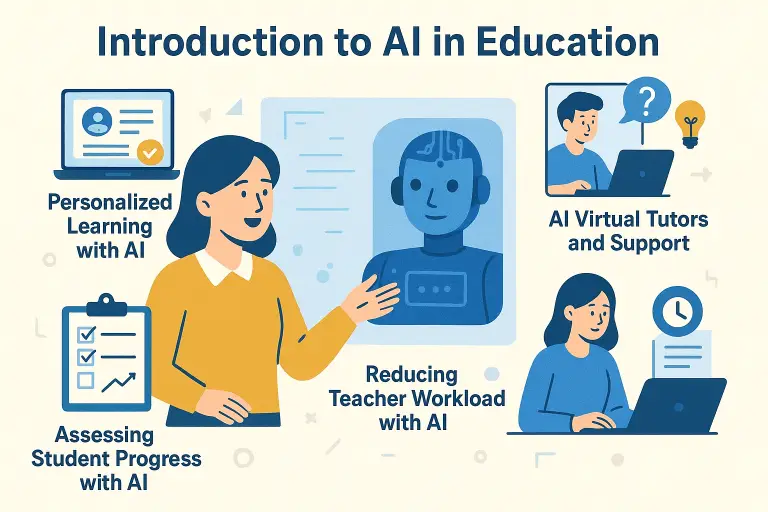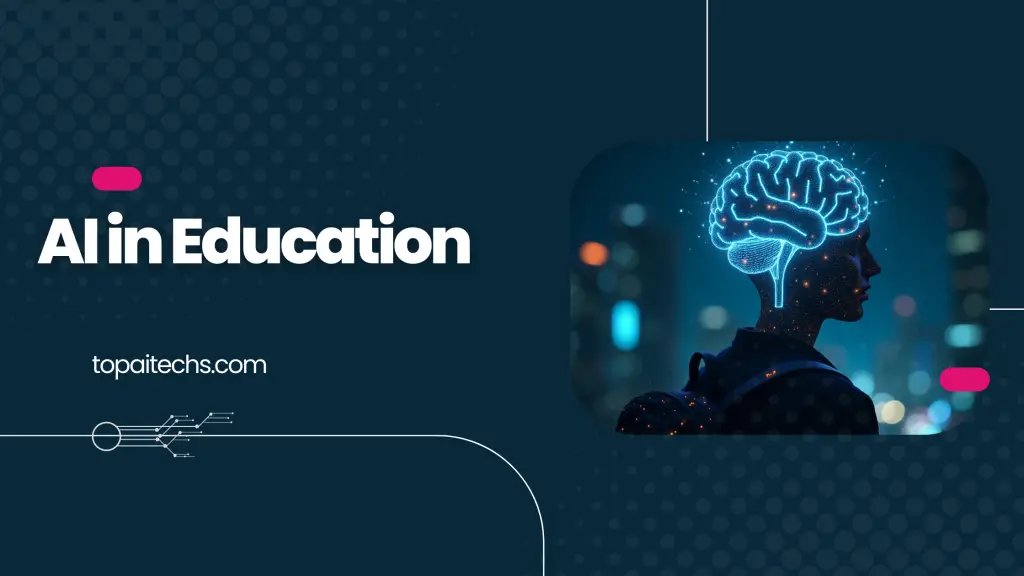Introduction to AI in Education
The use of artificial intelligence in education, as technology continues to advance, we are seeing more and more ways in which AI is being used to enhance the learning experience. In this video, we will explore some of the ways in which AI is being used in education, as well as the potential benefits and challenges of using AI in the classroom. One of the ways in which AI is being used in education is through personalized learning. With personalized learning, AI algorithms are used to analyze a student’s performance and provide customized lesson plans and recommendations for what the student should study next.
Table of Contents

Personalized Learning with AI
This can be especially useful for students who may be struggling in a particular subject, as the AI can identify the specific areas where the student needs the most help and provide targeted instruction. Another way in which AI is being used in education is through the development of virtual tutors and teaching assistants. These AI-powered tools can help students with tasks such as homework help, answering questions, and providing feedback on assignments. They can also be used to provide additional support for students who may be struggling to keep up with the rest of the class.
AI tools For Personalized Learning:
Adaptive Learning Platforms (e.g., DreamBox, Knewton Alta): These platforms analyse student responses in real time using artificial intelligence. Subsequent problems are then tailored to the individual learning style and knowledge gaps of the student.
AI Virtual Tutors and Support
AI is also being used in education to assess student progress and identify areas for improvement. For example, AI algorithms can analyze student performance on tests and assignments and provide feedback on where the student is excelling and where they may need additional support. This can be a helpful tool for teachers, as it allows them to quickly identify areas where students may be struggling and provide additional support. There are also a number of educational tools that use AI to create personalized study plans for students.
These tools can analyze a student’s strengths and weaknesses and create a customized study plan that is tailored to the student’s specific needs. This can be especially useful for students who are preparing for standardized tests, as the AI-powered study plan can help the student focus on the areas where they need the most improvement.
Best AI coding tools
AI tools Regarding Online Tutoring and Assistance:
AI-Powered Tutors and Chatbots (like Khan Academy’s Khanmigo and Carnegie Learning’s Mika): These resources serve as virtual assistants, responding to student enquiries and offering homework assistance around-the-clock. They encourage deeper understanding by providing detailed instructions without revealing the solution.
Reducing Teacher Workload with AI
One of the potential benefits of using AI in education is that it can help to reduce the workload for teachers. With AI-powered tools, teachers can spend less time on tasks such as grading assignments and providing feedback, and more time on tasks such as lesson planning and providing one-on-one support to students. This can allow teachers to be more effective in their roles, as they are able to focus on the tasks that are most important for student learning.
AI tools To lessen the workload of teachers:
GradeScope and Teachermatic are examples of automated grading tools that use artificial intelligence (AI) to grade multiple-choice, fill-in-the-blank, and even structured short answers. This frees up teachers’ time for lesson planning and one-on-one student support by drastically cutting down on the amount of time they spend grading.
Challenges: Bias in AI Algorithms
There are also a number of potential challenges to using AI in education. One concern is the potential for AI algorithms to perpetuate biases that are present in the data used to train them. For example, if an AI algorithm is trained on data from a group of predominantly white, middle-class students, it may not be as effective at identifying the needs of students from other backgrounds. It is important to be aware of these biases and take steps to address them when using AI in education. Another challenge of using AI in education is the potential for it to replace human teachers.
AI Cannot Replace Human Teachers
While AI can certainly be a useful tool in the classroom, it is important to remember that it cannot replace the role of a human teacher. Teachers play a vital role in the learning process, and it is important that they continue to be an integral part of the educational system. In conclusion, AI has the potential to be a powerful tool in education.
It can be used to personalize learning, provide additional support to students, and assess student progress. However, it is important to be aware of the potential challenges of using AI in education, such as the risk of perpetuating biases and the potential for it to replace human teachers. By understanding both the potential benefits and challenges of using AI in education, we can ensure that it is used effectively to enhance learning.
We will explore both the positive and negative impacts of using AI in education. One of the potential positive impacts of using AI in education is that it can help to personalize learning. With personalized learning, AI algorithms are used to analyze a student’s performance and provide customized lesson plans and recommendations for what the student should study next.
This can be especially useful for students who may be struggling in a particular subject, as the AI can identify the specific areas where the student needs the most help and provide targeted instruction.
Personalized learning can also be helpful for students who are advanced learners, as it can provide them with additional challenges to help them continue to grow and learn. AI is also being used in education to assess student progress and identify areas for improvement. For example, AI algorithms can analyze student performance on tests and assignments and provide feedback on where the student is excelling and where they may need additional support. This can be a helpful tool for teachers, as it allows them to quickly identify areas where students may be struggling and provide additional support.
There are also a number of educational tools that use AI to create personalized study plans for students. These tools can analyze a student’s strengths and weaknesses and create a customized study plan that is tailored to the student’s specific needs. This can be especially useful for students who are preparing for standardized tests, as the AI-powered study plan can help the student focus on the areas where they need the most improvement.
One of the potential benefits of using AI in education is that it can help to reduce the workload for teachers. With AI-powered tools, teachers can spend less time on tasks such as grading assignments and providing feedback, and more time on tasks such as lesson planning and providing one-on-one support to students. This can allow teachers to be more effective in their roles, as they are able to focus on the tasks that are most important for student learning. However, there are also a number of potential negative impacts of using AI in education. One concern is the potential for AI algorithms to perpetuate biases that are present in the data used to train them.
For example, if an AI algorithm is trained on data from a group of predominantly white, middle-class students, it may not be as effective at identifying the needs of students from other backgrounds.
It is important to be aware of these biases and take steps to address them when using AI in education. Another challenge of using AI in education is the potential for it to replace human teachers. While AI can certainly be a useful tool in the classroom, it is important to remember that it cannot replace the role of a human teacher. Teachers play a vital role in the learning process, and it is important that they continue to be an integral part of the educational system.
AI tools To evaluate the progress of students:
Automated essay scoring tools, such as e-rater® from ETS and Revision Assistant from Turnitin: This AI evaluates student work for grammar, structure, and argument strength using predetermined rubrics. It gives teachers regular, instant feedback so they can concentrate on more in-depth assessment.
Access and Equity Concerns with AI
There are also concerns about the potential for AI to create a divide between students who have access to these technologies and those who do not. If certain schools or districts are able to afford and implement AI-powered tools while others are not, this could create a gap in the education provided to students. It is important to ensure that all students have access to the same educational resources and opportunities. Be sure to check out our other videos and subscribe to stay up to date with all of our latest content. Thank you for watching.
Conclusion
In conclusion, there is a lot of promise for AI in education. It can reduce teacher workloads, support students with virtual tutors, personalise learning, and offer comprehensive insights into students’ progress. However, we also need to be mindful of the drawbacks, such as algorithmic bias, unequal access, and the dangers of depending too much on machines rather than educators. We can make effective use of AI in education to improve learning for all students if we are aware of both its advantages and disadvantages.
